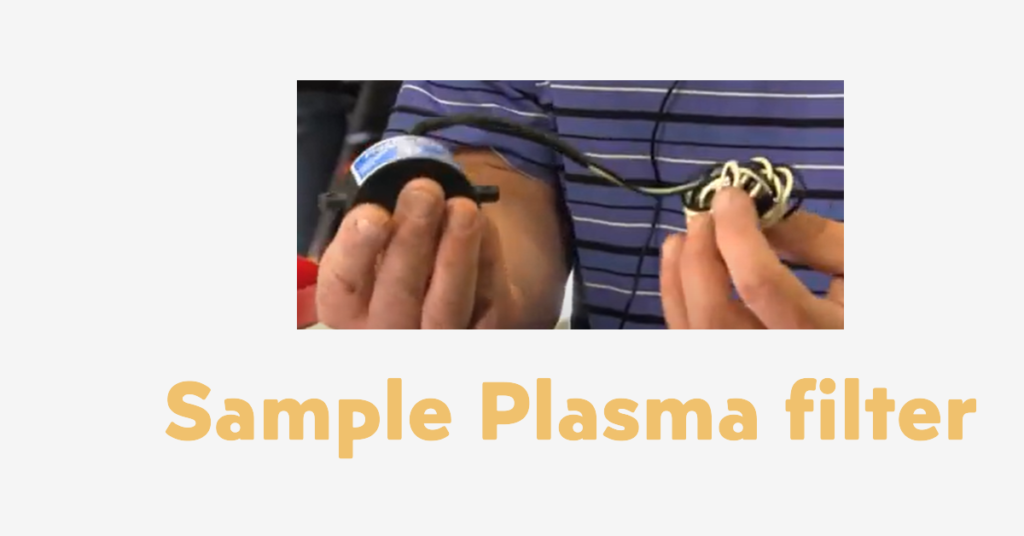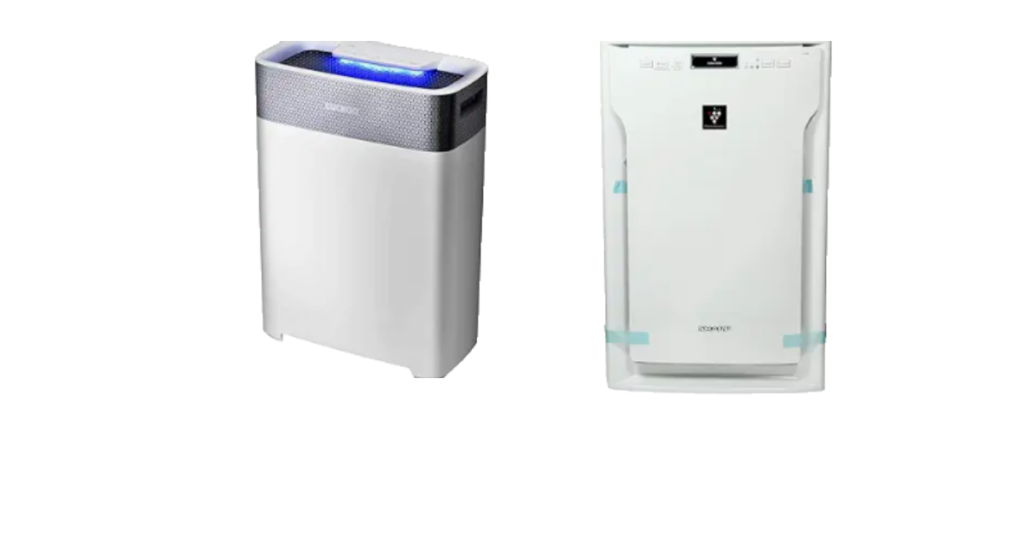Plasma Air Filter in air purifiers represent a cutting-edge technology which is revolutionizing indoor air quality. Lets make it simle to understand, tThese Plasma filters utilize plasma, a state of matter consisting of charged particles, to elevate the efficiency of airborne contaminant removal.
Among the various types of air filters available, plasma air filters have gained popularity for their effectiveness in removing airborne pollutants. In this comprehensive guide, we will delve into what plasma air filters are, how they work, their benefits, and much more.
The benefits of Plasma Filters extend to improved removal of airborne particles, heightened effectiveness against bacteria and viruses, and a crucial role in reducing allergens in indoor spaces. Plasma air filtration excel in actively neutralizing contaminants, offering a more dynamic and efficient solution when compared to traditional filtration methods. As we delve into the intricate details of Plasma Filters in air purifiers, we’ll explore their mechanisms of action, energy efficiency, sustainability aspects, and their applications in promoting respiratory health and overall well-being.
What is a Plasma Air Filter?
Plasma air filters, also known as ionizers or ion generators, are a type of air purification technology that uses charged particles to remove contaminants from the air. These filters emit a stream of negatively charged ions, which attach themselves to airborne particles like dust, pollen, smoke, and pet dander. Once the particles become negatively charged, they are attracted to positively charged plates within the air purifier, effectively removing them from the air.
The filters in Plasma air purifiers use bipolar ionization technology. It produce equal numbers of positively and negatively charged oxygen ions that neutralize the pollutants in the air. Negative ions have an extra electron, while positive ions are missing one, making them unstable. To stabilize, these ions look for atoms and molecules in the air to swap electrons with. This process neutralizes things like dust, bacteria, viruses, bad smells, gases, and harmful chemicals in the air.
Plasma Air Filter represent an innovative technology in the realm of air purification. These filters utilize plasma, a state of matter consisting of charged particles, to enhance the removal of airborne contaminants. Plasma filters are designed to harness the power of ionized particles to improve indoor air quality effectively.


Understanding Plasma air Filtration
A. Explanation of Plasma Technology
Plasma technology involves the creation of a plasma state by energizing a gas. In the context of air purification, this energized state introduces charged particles that interact with contaminants. Plasma filters utilize this technology to enhance the filtration process and achieve more effective removal of pollutants.
How Does a Plasma Air Filter Work?
Plasma air filters work through a process called electrostatic precipitation. As the air passes through the purifier, it encounters the ionization field created by the plasma air filter. The airborne particles in the air become charged when they come into contact with the negatively charged ions emitted by the filter. These charged particles then adhere to positively charged plates or surfaces within the purifier, effectively removing them from the air stream.
The mechanism of action in air purifiers equipped with these filters revolves around the ionization of air particles. As air passes through the filter, the plasma field interacts with contaminants, causing them to either stick to surfaces or undergo chemical reactions that render them harmless. This active approach sets these filters apart from traditional filtration methods.
Following are some technical Details of the Plasmamade Air Filter:
- Plasma Generation: The “Plasmamade Air Filter” generates plasma through the use of electrical discharges. These discharges ionize gases in the air, creating a plasma field rich in charged particles.
- Reactive Species: Within the plasma field, various reactive species are formed, including ions, radicals, and excited molecules. These species possess powerful oxidizing properties, allowing them to react with and neutralize harmful pollutants in the air.
- Pollutant Removal: As air passes through the Plasmamade Air Filter, airborne contaminants come into contact with the reactive species in the plasma field. Through a series of chemical reactions, pollutants are broken down and rendered harmless, effectively purifying the air.
- Continuous Operation: The Plasmamade Air Filter operates continuously to maintain clean air in indoor environments. It does not rely on physical filters that require periodic replacement, making it a low-maintenance and cost-effective solution for air purification.
- Energy Efficiency: Despite its powerful performance, the Plasmamade Air Filter is energy-efficient, consuming minimal electricity compared to traditional air purification systems. This makes it an environmentally friendly option for improving indoor air quality.
- Integration Options: The Plasmamade Air Filter can be integrated into existing HVAC (heating, ventilation, and air conditioning) systems or installed as a standalone unit, offering flexibility in deployment for residential, commercial, and industrial applications.
C. Comparison with Traditional Filtration Methods
When compared to traditional filtration methods, such as HEPA filters, plasma filter air purifiers offer a more dynamic and efficient solution. Traditional filters capture particles through physical barriers, while plasma filtration system actively neutralize contaminants. This results in a more thorough purification process with the potential to address a wider range of pollutants.
Benefits of Plasma Air Filter
- Efficient Removal of Airborne Contaminants: Plasma air filters are highly effective at removing a wide range of airborne pollutants, including dust, pollen, mold spores, pet dander, and smoke.
- No Ozone Emission: Unlike some other air purification technologies, plasma air filters do not produce ozone as a byproduct. Ozone can be harmful to health, especially at high levels, so the absence of ozone emission is a significant advantage of plasma air filters.
- Low Maintenance: Plasma air filters typically require minimal maintenance compared to other types of filters. There are no filters to replace regularly, which can save both time and money.
- Quiet Operation: Most plasma air purifiers operate quietly, making them suitable for use in bedrooms, offices, and other quiet spaces.
Benefits of Plasmamade Air Filter
The Plasmamade air filter offers several advantages over conventional air purification methods. Its ability to generate plasma allows it to target and destroy bacteria, viruses, and mold spores, providing cleaner and healthier air for you and your family. Additionally, the Plasmamade air filter is energy-efficient and eco-friendly, making it a sustainable choice for indoor air purification. With its advanced technology and superior performance, the Plasmamade air filter sets a new standard for air quality in homes and commercial spaces alike.
Addressing Common Concerns
A. Safety of Plasma Filters
Addressing concerns about the safety of plasma filters is crucial for user confidence. Extensive testing and adherence to safety standards ensure that these filters are safe for use in various environments, providing effective air purification without compromising safety.
B. Ozone Emission: Myths and Facts
Dispelling myths and presenting facts about ozone emission is essential in understanding the safety of these filters. While ozone generation can occur, modern plasma filters are designed to minimize ozone production, staying within safe limits defined by regulatory standards.
C. Compliance with Regulatory Standards
Ensuring compliance with regulatory standards is a priority for manufacturers of these filters. Meeting established guidelines for emissions and safety ensures that these filters contribute to improved air quality without compromising on health and environmental standards.
Applications in Health and Well-being
A. Impact on Respiratory Health
These filters have a significant impact on respiratory health by actively reducing airborne pollutants. The efficient removal of particles, allergens, and microorganisms contributes to cleaner air, thereby enhancing respiratory well-being. Individuals with respiratory conditions benefit from the improved air quality provided by these filters.
B. Potential Benefits for Allergy Sufferers
Allergy sufferers find relief through the potential benefits of plasma filters. The reduction of allergenic particles, including pollen and pet dander, creates environments that are more conducive to individuals prone to allergies. These filters play a crucial role in alleviating allergy symptoms and improving overall quality of life.
C. Creating Healthy Indoor Environments
These filters contribute to the creation of healthy indoor environments by actively purifying the air. Beyond addressing specific health concerns, these filters promote a general sense of well-being by ensuring that indoor spaces are free from harmful pollutants. This holistic approach enhances the overall health of occupants.
Conclusion
Plasma air filters are an effective and efficient way to improve indoor air quality. With their ability to remove a wide range of airborne pollutants and their low maintenance requirements, plasma air purifiers are a popular choice for many households and businesses. By incorporating a plasma air filter into your air purifier, you can breathe easier knowing that you’re breathing cleaner, healthier air.
Concluding with a discussion on the future outlook emphasizes the dynamic nature of air quality technology. Continued advancements in plasma air filter technology, coupled with ongoing research and consumer education, pave the way for a future where cleaner, healthier indoor air is more accessible to people around the world.
FAQ
What is a plasma air filter?
A plasma air filter is an air purification device that utilizes plasma technology to improve indoor air quality. It generates a plasma field, consisting of charged particles, to actively neutralize and eliminate airborne contaminants such as dust, pollen, and bacteria, providing an effective method for purifying the air in enclosed spaces.
What are the side effects of plasma air purifiers?
Plasma air purifiers generally have minimal side effects. However, some models may produce a small amount of ozone as a byproduct. While modern designs aim to keep ozone emissions within safe levels, it’s essential to consider potential respiratory irritation for sensitive individuals. Regular maintenance, proper usage, and adherence to safety guidelines can help minimize any side effects.
Is a plasma filter worth it?
The worthiness of a plasma filter depends on individual needs and preferences. Plasma filters are effective in actively removing a wide range of pollutants from the air, offering benefits such as improved particle removal, effectiveness against bacteria and viruses, and energy efficiency. Assessing specific air quality concerns and considering factors like maintenance costs and user safety will help determine if a plasma filter aligns with your needs.
What does PlasmaWave air purifier do?
A PlasmaWave air purifier incorporates a technology that releases charged ions to create plasma, which then reacts with water vapor in the air to produce hydroxyl radicals. These radicals can neutralize pollutants like viruses, bacteria, and odors, providing an additional layer of air purification. It’s designed to enhance the overall effectiveness of the air purifier in capturing and neutralizing airborne contaminants.
Does Plasma Air work?
Yes, Plasma Air is designed to work effectively in improving indoor air quality. By leveraging plasma technology, it actively neutralizes and eliminates a variety of airborne pollutants, contributing to a cleaner and healthier living or working environment. The efficiency of Plasma Air systems may vary, and their effectiveness is influenced by factors such as the specific technology used, maintenance, and proper integration into air purification systems.
Do Plasma Air purifiers produce ozone?
The ozone production in Plasma Air purifiers can vary depending on the specific design and technology. While some models are designed to minimize ozone emissions and adhere to safety standards, it’s important to check the specifications of the particular purifier in use. Modern Plasma Air purifiers often employ technologies to keep ozone levels within safe limits.
Are plasma ion air purifiers safe?
In general, plasma ion air purifiers are considered safe when used according to manufacturer instructions. These purifiers release charged ions into the air to neutralize pollutants. However, it’s crucial to ensure that the device complies with safety standards and emits ions within safe levels. Regular maintenance and proper usage contribute to the overall safety of plasma ion air purifiers.
Is PlasmaWave air purifier safe?
The safety of a PlasmaWave air purifier depends on its design and compliance with safety standards. PlasmaWave technology typically releases ions to create plasma, contributing to air purification. When used as directed and within specified limits, PlasmaWave air purifiers are generally considered safe. It’s recommended to follow manufacturer guidelines and ensure the device meets regulatory standards.
Are plasma Ionisers safe?
Plasma ionizers, like other air purification technologies, are generally safe when used as intended. They release ions to neutralize airborne particles. However, potential safety concerns may arise if the ionizer produces ozone or if the concentration of ions exceeds safe levels. Adhering to safety guidelines, regular maintenance, and choosing ionizers designed to minimize ozone emission contribute to their safety.
What is the difference between ionizer and plasma purifier?
The primary difference between an ionizer and a plasma purifier lies in their methods of operation. Ionizers release charged ions into the air to attach to and neutralize pollutants. On the other hand, a plasma purifier creates a plasma field using technologies like PlasmaWave, which may involve the generation of ions and other reactive species. While both aim to improve air quality, the specific mechanisms and technologies used distinguish ionizers from plasma purifiers.
DheerajSonwane is a dedicated writer with expertise in air purification technologies. He focuses on providing well-researched content to help readers improve indoor air quality in homes and businesses. As the lead writer at AirPurifierMaster.com, Dheeraj offers practical advice his insightful reviews guide individuals in choosing the best air purifiers for their needs.

